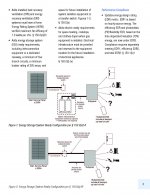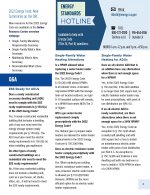mtnelect
HVAC & Electrical Contractor
- Location
- Southern California
- Occupation
- Contractor, C10 & C20 - Semi Retired
The most significant change in the
2022 Building Energy Efficiency
Standards (Energy Code) affecting
single-family residential buildings
is a prescriptive heat pump
baseline for either water heating
or space heating, depending on
the climate zone. The ventilation
requirements are strengthened to
improve indoor air quality. There
are new requirements and revisions
for additions and alterations. The
definition for single-family buildings
in § 100.1 is updated.
2022 Building Energy Efficiency
Standards (Energy Code) affecting
single-family residential buildings
is a prescriptive heat pump
baseline for either water heating
or space heating, depending on
the climate zone. The ventilation
requirements are strengthened to
improve indoor air quality. There
are new requirements and revisions
for additions and alterations. The
definition for single-family buildings
in § 100.1 is updated.
Attachments
-
 California Energy Commission - Blue Print September 2022_Page_1.jpg304.8 KB · Views: 3
California Energy Commission - Blue Print September 2022_Page_1.jpg304.8 KB · Views: 3 -
 California Energy Commission - Blue Print September 2022_Page_2.jpg323 KB · Views: 3
California Energy Commission - Blue Print September 2022_Page_2.jpg323 KB · Views: 3 -
 California Energy Commission - Blue Print September 2022_Page_3.jpg464.3 KB · Views: 3
California Energy Commission - Blue Print September 2022_Page_3.jpg464.3 KB · Views: 3 -
 California Energy Commission - Blue Print September 2022_Page_4.jpg435.4 KB · Views: 3
California Energy Commission - Blue Print September 2022_Page_4.jpg435.4 KB · Views: 3 -
 California Energy Commission - Blue Print September 2022_Page_5.jpg1.8 MB · Views: 3
California Energy Commission - Blue Print September 2022_Page_5.jpg1.8 MB · Views: 3


